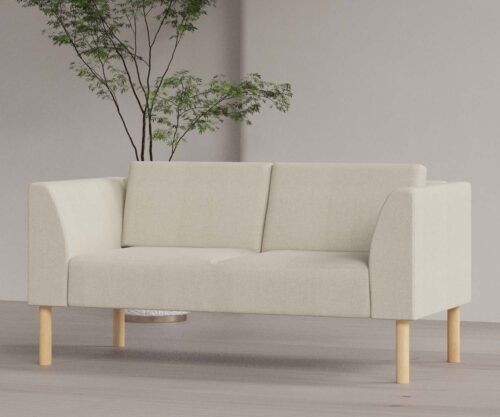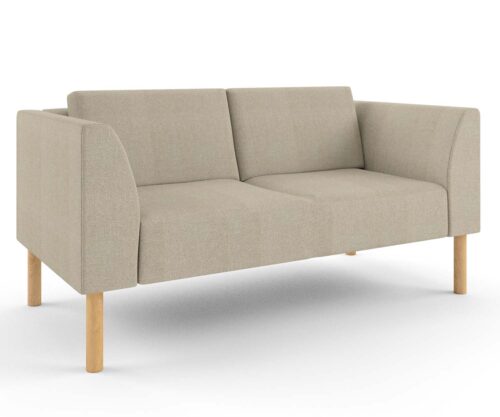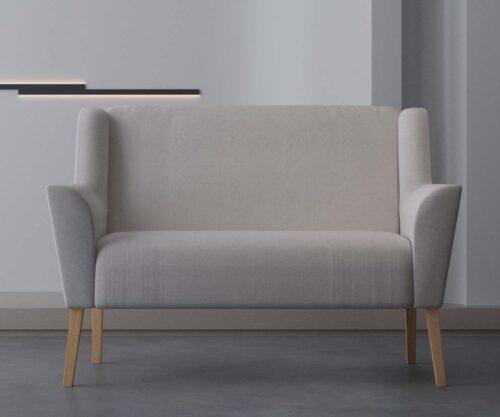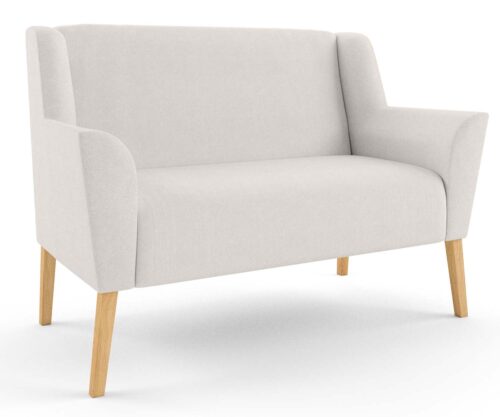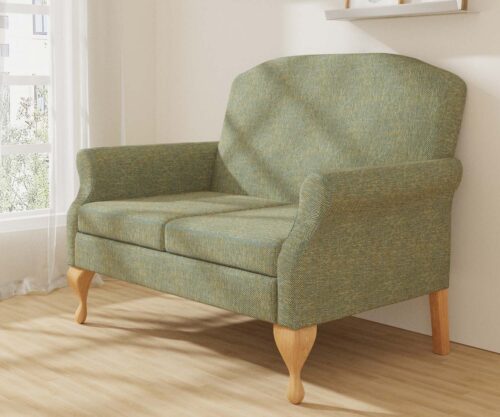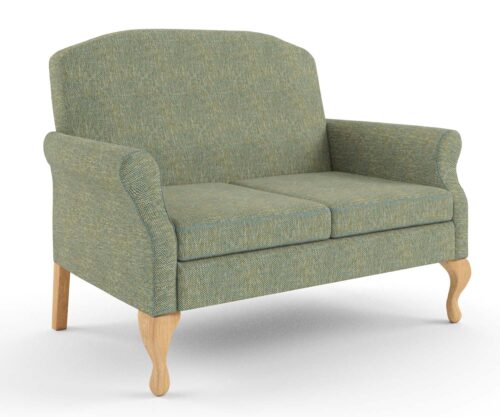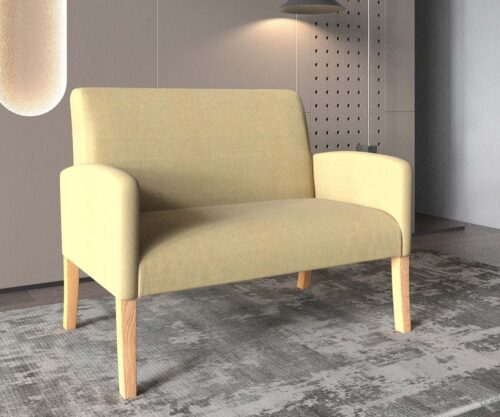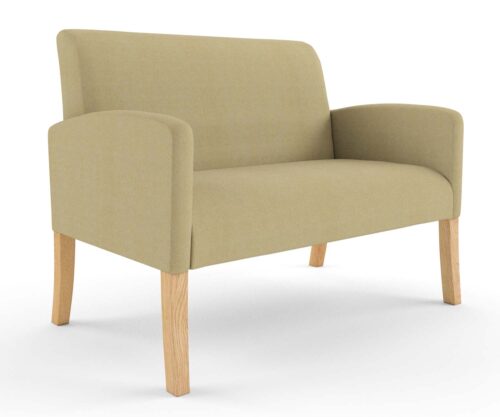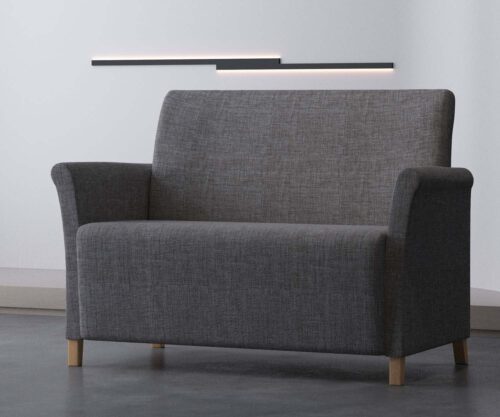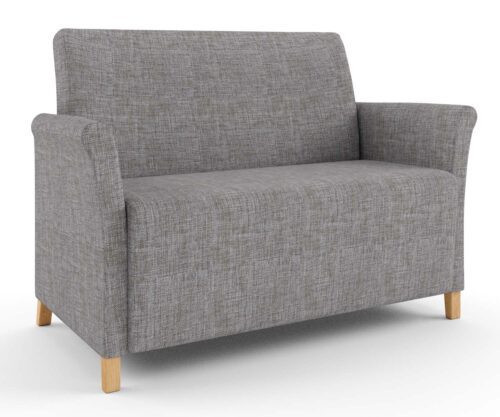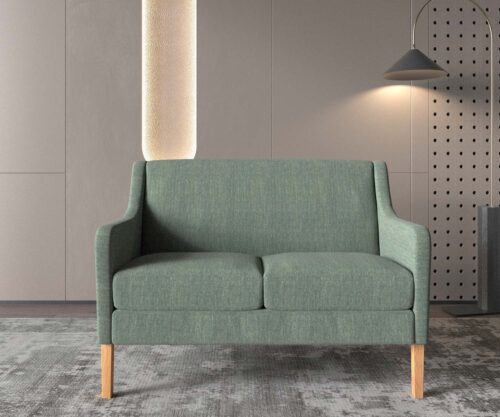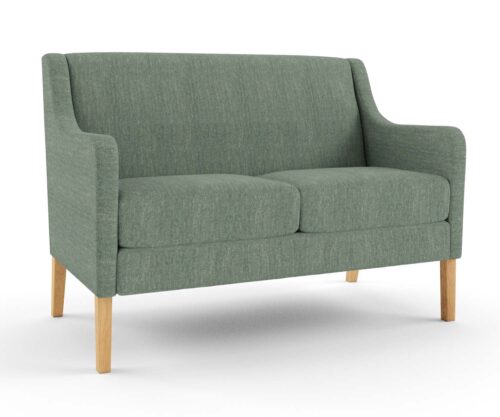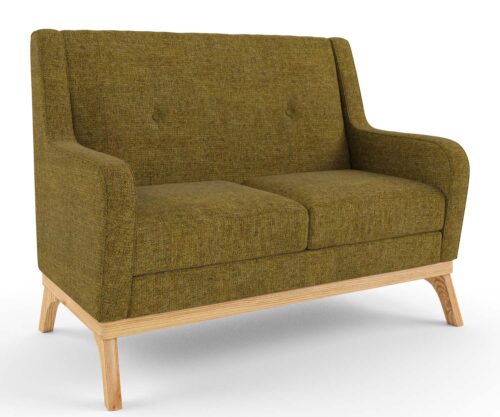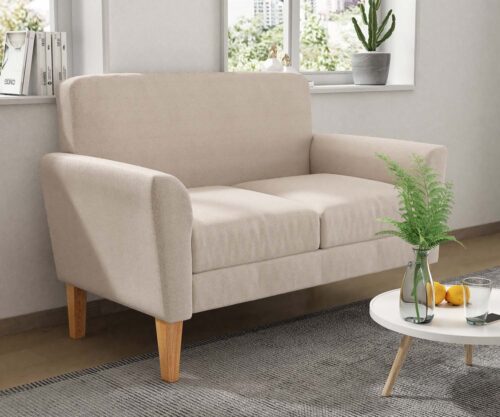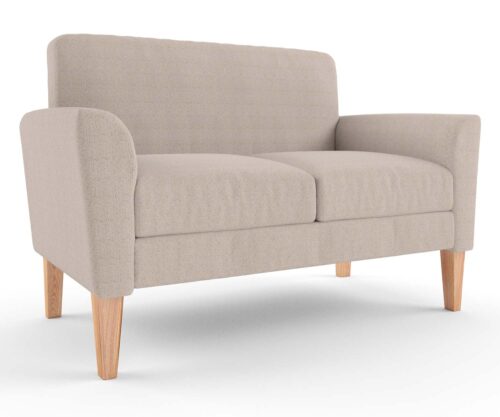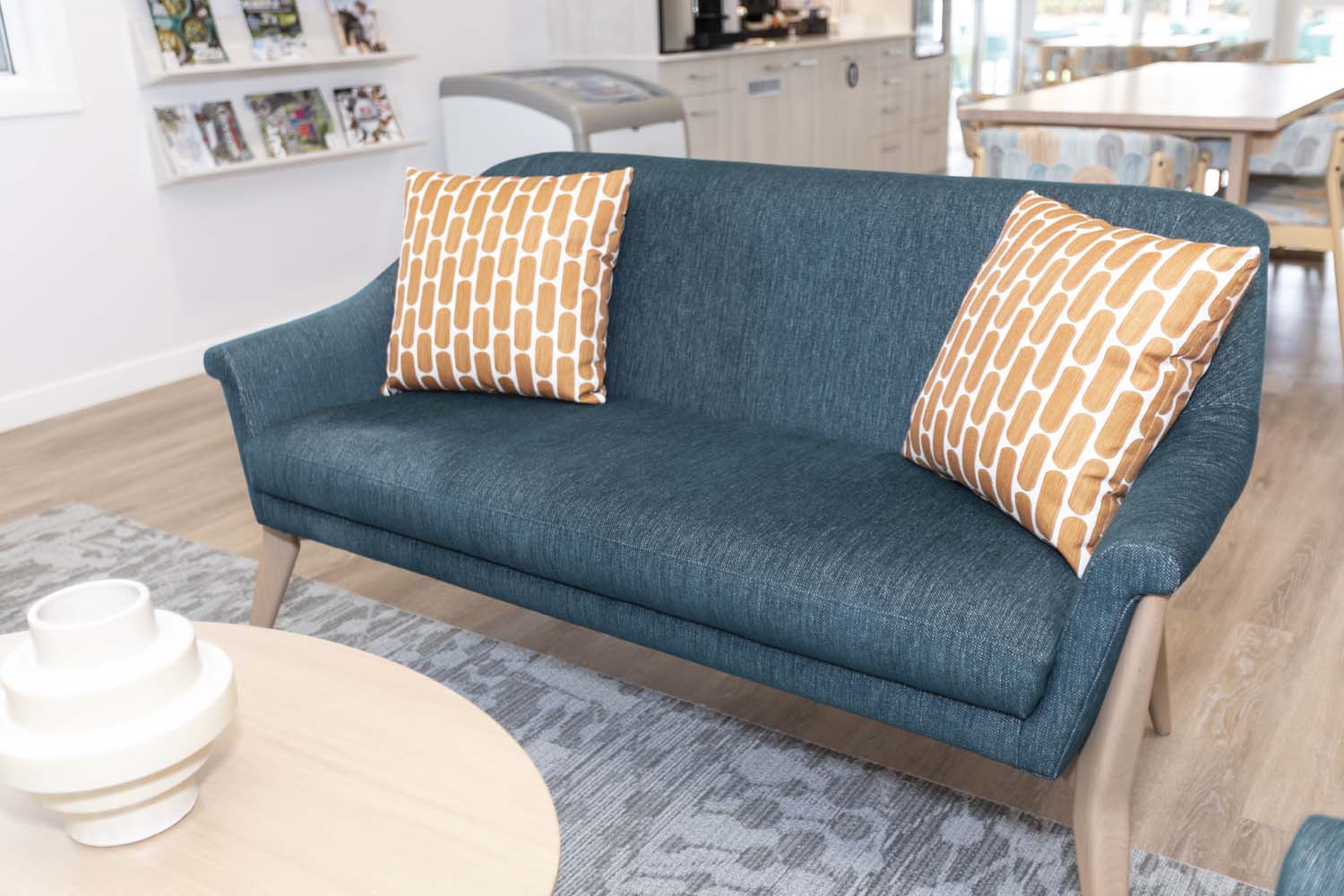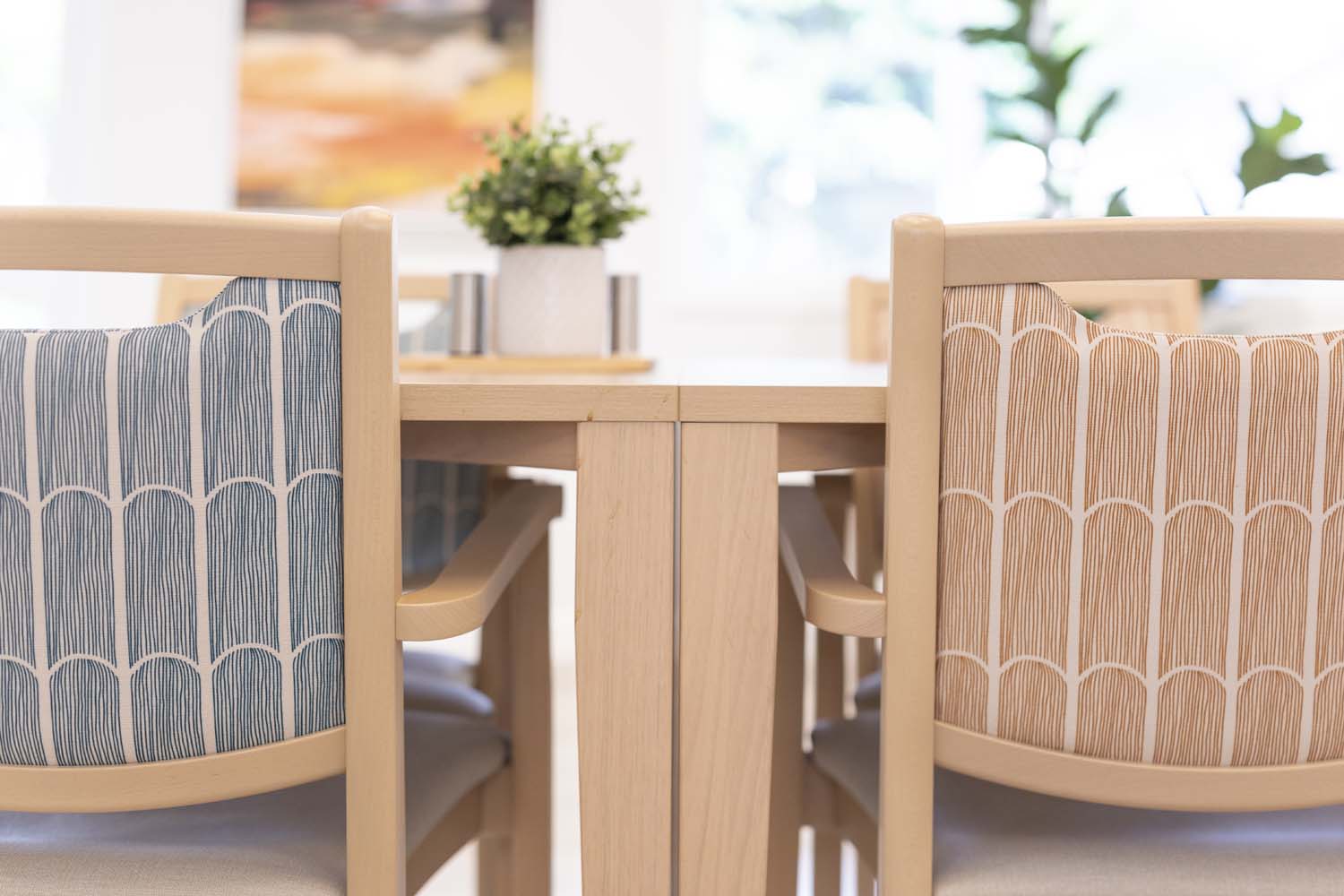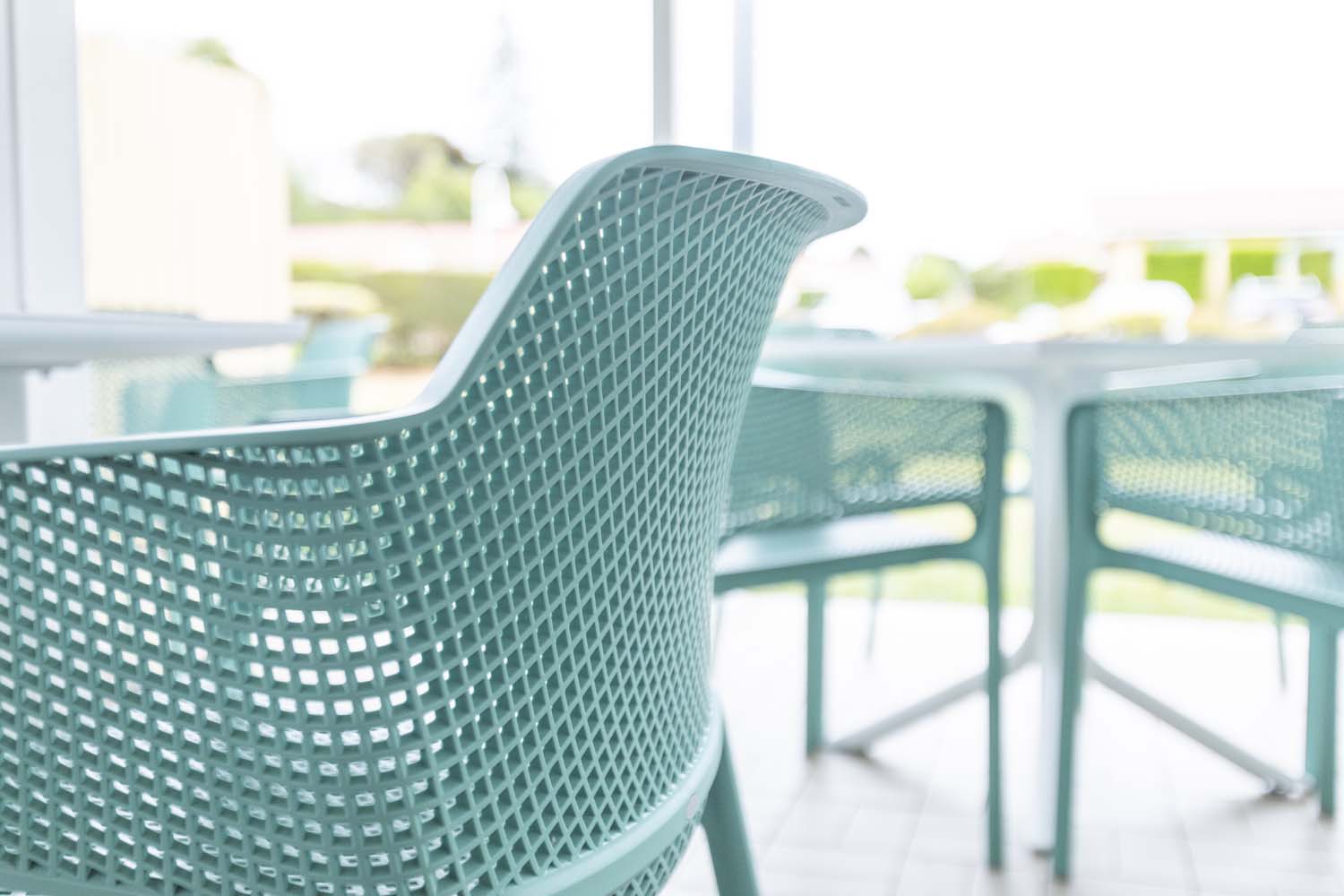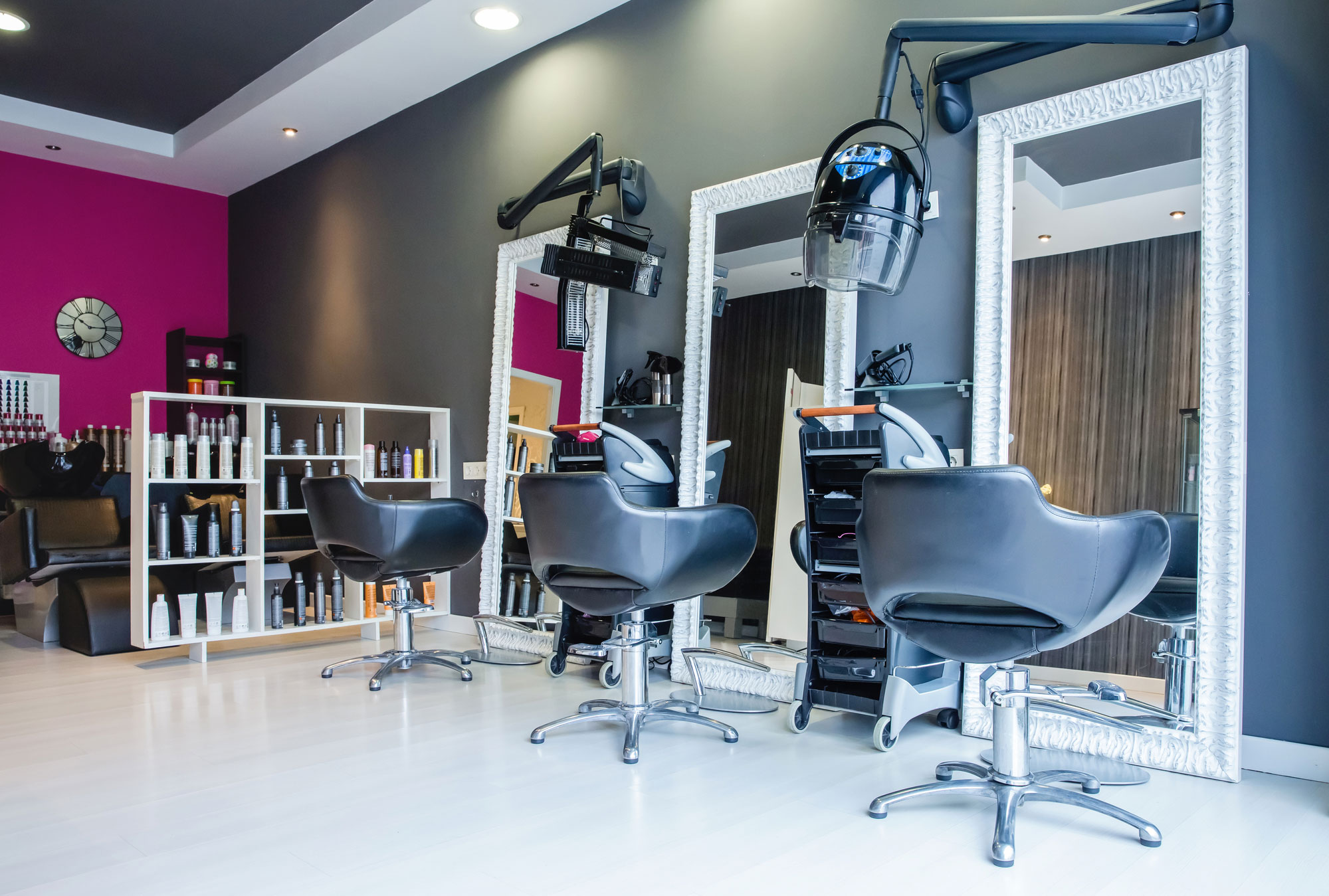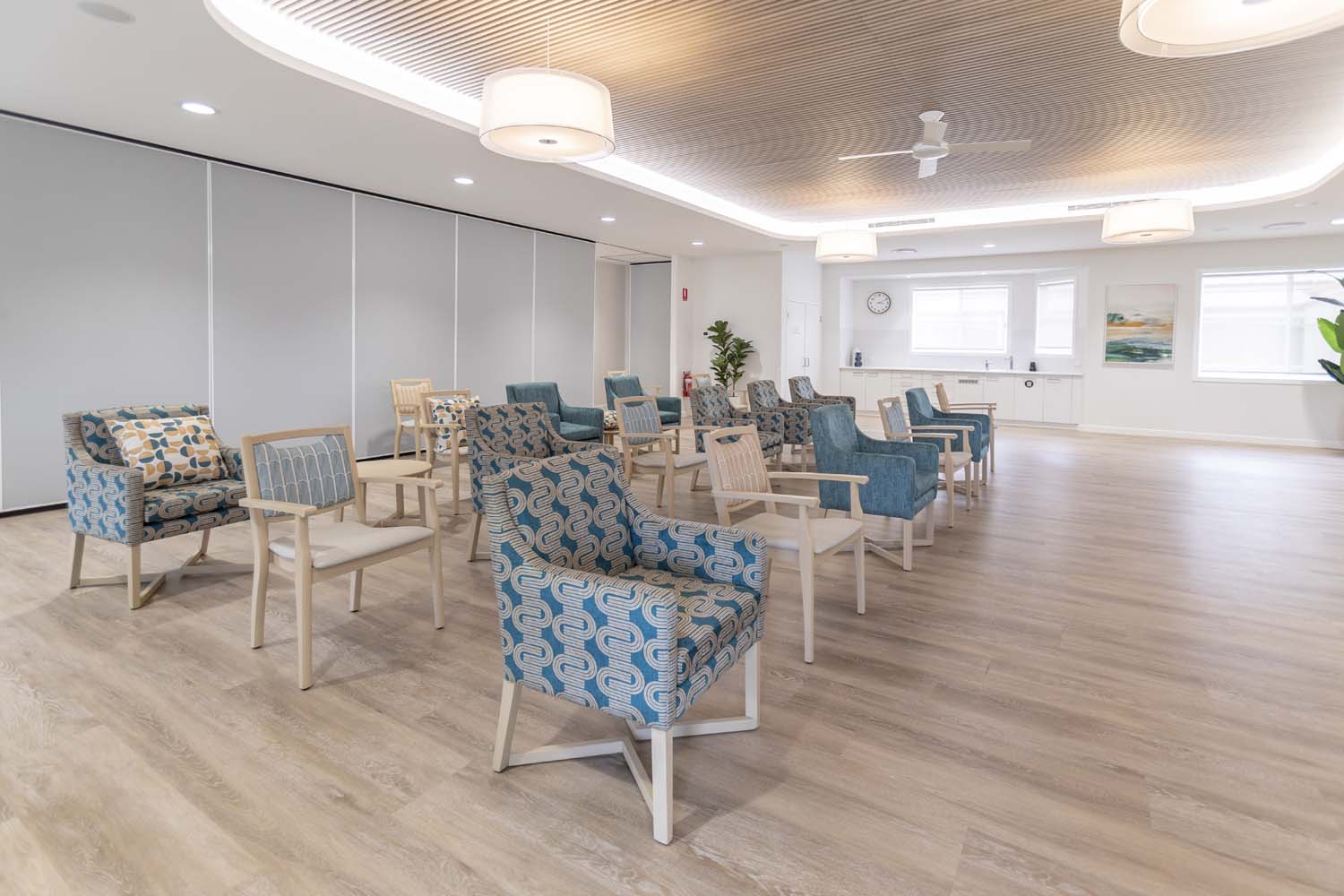6 Australian Retirement Living Industry Trends: What To Expect in 2023

Understanding the Latest Retirement Living Industry Trends
In Australia, the retirement living industry is a rapidly growing sector. With an ageing population and a greater emphasis on lifestyle choices, the demand for retirement living options, including retirement living furniture, is set to increase over the next decade.
Let’s take a look at some of the retirement living industry trends expected in 2023.
1. Ageing-in-Place Technology
Ageing-in-place technology is becoming increasingly popular in Australia’s retirement villages and aged care facilities.
Aging-in-place technology is a rapidly growing industry designed to enhance the quality of life for aging adults. These advanced technologies consist of easy-to-use remote systems, automated monitoring devices, and emergency response mechanisms that enable aging individuals to live safely and independently.
Many aging individuals feel that aging-in-place technology helps them maintain their privacy and dignity while providing them with a sense of security.
The best aging-in-place technologies are tailored to an individual’s needs and preferences, provide improved communication services and alert trusted family members or caregivers in the case of an emergency. Incorporating this type of technology into one’s home can be a great way to extend one’s independence while maintaining peace of mind. Ageing-in-place technology also provides peace of mind for family members who may not be able to visit regularly.
2. Virtual Village Communities
The development of virtual village communities is one of the most exciting trends in the Australian retirement living sector. A virtual village community is an online platform where seniors can connect with each other, share stories, organise virtual catch-ups with friends and family, discuss topics of interest, and even participate in activities such as yoga classes or art lessons without having to leave their homes.
Virtual village communities allow seniors to remain connected while still being able to maintain social distancing protocols during times when face-to-face contact may not be possible.
3. Technology Integration
The use of technology has already been embraced by many retirement villages and will continue to be used more widely across all aspects of the industry. We have already seen the use of automated processes for taking payments, paperless resident/maintenance record-keeping systems, as well as mobility and telemedicine solutions that serve to keep both staff and residents connected anywhere, anytime.
Many retirement villages now offer state-of-the-art technological facilities such as virtual kiosks that provide services, programs, activities, and access to helpful online information. Additionally, some retirement villages are equipping their communal spaces with advanced audio/visual systems to improve accessibility.
Technology will continue to revolutionise retirement living in Australia by allowing retirement villages to increase service availability and enhance quality of life.
4. Nutrition Education Programs
Nutrition education programs are becoming commonplace in Australian retirement villages. Providing retirement living residents with access to evidence-based nutrition information and resources can help reduce the risk of dietary-related chronic illnesses, improve overall health, and promote independent living; all core aspects of retirement living.
Nutrition education programs provide seniors with access to dieticians who can give them tailored advice on how to eat healthily as they age. These programs also teach seniors about food safety and how to prepare meals for themselves if they cannot rely on family or friends for assistance.
5. Competition
The population of Australians aged 65 and over is projected to grow by around 50% between 2021 and 2056, meaning demand for retirement accommodation will likely increase significantly over the next few years. As demand for retirement village accommodation grows, so does competition between providers. To keep up with this trend, village managers need to stay well-informed of emerging technologies and trends in order to remain competitive. They also need to ensure that their villages are meeting customer expectations when it comes to amenities, safety, security and quality of life for residents.
6. Sustainability and Wellness
Retirement villages are increasingly being designed with sustainability and wellness in mind. Villages are now incorporating green spaces into their designs and providing access to nature trails or other outdoor activities for residents. Additionally, health-focused amenities such as gyms or pools are becoming more popular as people look for ways to maintain their mental and physical well-being after they retire.
The Australian retirement living industry is ever-evolving and adapting to meet consumer demands for lifestyle choices and improved services. Village managers should keep up-to-date on emerging trends within the industry so that they can ensure their villages remain competitive while still providing quality care and amenities for their residents. By staying informed about changes in technology integration, competition levels, sustainability practices, wellness initiatives, village managers can be sure that their village will remain successful in 2023 and beyond.
FAQs About Retirement Living Trends
What are the current trends in the retirement living industry?
The retirement living industry is witnessing several trends, including a shift toward wellness-focused communities, the integration of technology for improved resident experiences, and a growing emphasis on sustainable and eco-friendly design.
How is technology being integrated into retirement living communities?
Technology is playing a significant role in retirement living with features like smart home automation, healthcare monitoring systems, and communication tools. These technologies aim to enhance safety, convenience, and the overall quality of life for residents.
Are there emerging architectural and design trends in retirement living communities?
Yes, contemporary retirement living communities are adopting more modern and flexible architectural designs. Trends include the incorporation of green spaces, communal areas for socialization, and adaptable living spaces that can cater to evolving needs.
What role does sustainability play in the retirement living industry?
Sustainability is becoming a key focus in retirement living. Communities are implementing eco-friendly practices, such as energy-efficient designs, renewable energy sources, and sustainable landscaping, to create environmentally responsible and cost-effective living environments.
How are retirement living facilities addressing the changing needs and preferences of residents?
Retirement living facilities are adapting to changing demographics and preferences by offering diverse amenities and services. This includes fitness and wellness programs, lifelong learning opportunities, and various dining options to cater to different tastes and dietary needs.
Is there a trend towards more personalized and individualized care in retirement living?
Yes, there is a growing trend towards personalized care plans in retirement living. Facilities are tailoring services to individual health needs, preferences, and lifestyle choices, fostering a more person-centered approach to care.
How are retirement living communities addressing the social aspects of residents’ lives?
Retirement living communities are placing a strong emphasis on socialization by providing communal spaces, organizing social events, and incorporating technology to facilitate virtual connections. These efforts aim to combat social isolation and promote a sense of community.
What impact has the COVID-19 pandemic had on retirement living industry trends?
The COVID-19 pandemic has accelerated certain trends in the retirement living industry, such as the adoption of telehealth services, increased focus on infection control measures, and the integration of technology to facilitate remote communication and engagement.
Are there trends in the retirement living industry related to affordability and financial planning?
Affordability is a growing concern in the retirement living industry. Trends include the development of more diverse financial models, such as rental-based communities and innovative ownership structures, to accommodate a range of financial situations.
How are retirement living facilities addressing the demand for active and engaging lifestyles among residents?
Retirement living facilities are incorporating a variety of amenities and activities to promote active and engaging lifestyles. This includes fitness centers, cultural programs, recreational spaces, and lifelong learning opportunities, catering to the diverse interests of residents.
Some of our favourite sofas designed for retirement living residents
More News
6 Australian Retirement Living Industry Trends: What To Expect in 2023

Understanding the Latest Retirement Living Industry Trends
In Australia, the retirement living industry is a rapidly growing sector. With an ageing population and a greater emphasis on lifestyle choices, the demand for retirement living options, including retirement living furniture, is set to increase over the next decade.
Let’s take a look at some of the retirement living industry trends expected in 2023.
1. Ageing-in-Place Technology
Ageing-in-place technology is becoming increasingly popular in Australia’s retirement villages and aged care facilities.
Aging-in-place technology is a rapidly growing industry designed to enhance the quality of life for aging adults. These advanced technologies consist of easy-to-use remote systems, automated monitoring devices, and emergency response mechanisms that enable aging individuals to live safely and independently.
Many aging individuals feel that aging-in-place technology helps them maintain their privacy and dignity while providing them with a sense of security.
The best aging-in-place technologies are tailored to an individual’s needs and preferences, provide improved communication services and alert trusted family members or caregivers in the case of an emergency. Incorporating this type of technology into one’s home can be a great way to extend one’s independence while maintaining peace of mind. Ageing-in-place technology also provides peace of mind for family members who may not be able to visit regularly.
2. Virtual Village Communities
The development of virtual village communities is one of the most exciting trends in the Australian retirement living sector. A virtual village community is an online platform where seniors can connect with each other, share stories, organise virtual catch-ups with friends and family, discuss topics of interest, and even participate in activities such as yoga classes or art lessons without having to leave their homes.
Virtual village communities allow seniors to remain connected while still being able to maintain social distancing protocols during times when face-to-face contact may not be possible.
3. Technology Integration
The use of technology has already been embraced by many retirement villages and will continue to be used more widely across all aspects of the industry. We have already seen the use of automated processes for taking payments, paperless resident/maintenance record-keeping systems, as well as mobility and telemedicine solutions that serve to keep both staff and residents connected anywhere, anytime.
Many retirement villages now offer state-of-the-art technological facilities such as virtual kiosks that provide services, programs, activities, and access to helpful online information. Additionally, some retirement villages are equipping their communal spaces with advanced audio/visual systems to improve accessibility.
Technology will continue to revolutionise retirement living in Australia by allowing retirement villages to increase service availability and enhance quality of life.
4. Nutrition Education Programs
Nutrition education programs are becoming commonplace in Australian retirement villages. Providing retirement living residents with access to evidence-based nutrition information and resources can help reduce the risk of dietary-related chronic illnesses, improve overall health, and promote independent living; all core aspects of retirement living.
Nutrition education programs provide seniors with access to dieticians who can give them tailored advice on how to eat healthily as they age. These programs also teach seniors about food safety and how to prepare meals for themselves if they cannot rely on family or friends for assistance.
5. Competition
The population of Australians aged 65 and over is projected to grow by around 50% between 2021 and 2056, meaning demand for retirement accommodation will likely increase significantly over the next few years. As demand for retirement village accommodation grows, so does competition between providers. To keep up with this trend, village managers need to stay well-informed of emerging technologies and trends in order to remain competitive. They also need to ensure that their villages are meeting customer expectations when it comes to amenities, safety, security and quality of life for residents.
6. Sustainability and Wellness
Retirement villages are increasingly being designed with sustainability and wellness in mind. Villages are now incorporating green spaces into their designs and providing access to nature trails or other outdoor activities for residents. Additionally, health-focused amenities such as gyms or pools are becoming more popular as people look for ways to maintain their mental and physical well-being after they retire.
The Australian retirement living industry is ever-evolving and adapting to meet consumer demands for lifestyle choices and improved services. Village managers should keep up-to-date on emerging trends within the industry so that they can ensure their villages remain competitive while still providing quality care and amenities for their residents. By staying informed about changes in technology integration, competition levels, sustainability practices, wellness initiatives, village managers can be sure that their village will remain successful in 2023 and beyond.
FAQs About Retirement Living Trends
What are the current trends in the retirement living industry?
The retirement living industry is witnessing several trends, including a shift toward wellness-focused communities, the integration of technology for improved resident experiences, and a growing emphasis on sustainable and eco-friendly design.
How is technology being integrated into retirement living communities?
Technology is playing a significant role in retirement living with features like smart home automation, healthcare monitoring systems, and communication tools. These technologies aim to enhance safety, convenience, and the overall quality of life for residents.
Are there emerging architectural and design trends in retirement living communities?
Yes, contemporary retirement living communities are adopting more modern and flexible architectural designs. Trends include the incorporation of green spaces, communal areas for socialization, and adaptable living spaces that can cater to evolving needs.
What role does sustainability play in the retirement living industry?
Sustainability is becoming a key focus in retirement living. Communities are implementing eco-friendly practices, such as energy-efficient designs, renewable energy sources, and sustainable landscaping, to create environmentally responsible and cost-effective living environments.
How are retirement living facilities addressing the changing needs and preferences of residents?
Retirement living facilities are adapting to changing demographics and preferences by offering diverse amenities and services. This includes fitness and wellness programs, lifelong learning opportunities, and various dining options to cater to different tastes and dietary needs.
Is there a trend towards more personalized and individualized care in retirement living?
Yes, there is a growing trend towards personalized care plans in retirement living. Facilities are tailoring services to individual health needs, preferences, and lifestyle choices, fostering a more person-centered approach to care.
How are retirement living communities addressing the social aspects of residents’ lives?
Retirement living communities are placing a strong emphasis on socialization by providing communal spaces, organizing social events, and incorporating technology to facilitate virtual connections. These efforts aim to combat social isolation and promote a sense of community.
What impact has the COVID-19 pandemic had on retirement living industry trends?
The COVID-19 pandemic has accelerated certain trends in the retirement living industry, such as the adoption of telehealth services, increased focus on infection control measures, and the integration of technology to facilitate remote communication and engagement.
Are there trends in the retirement living industry related to affordability and financial planning?
Affordability is a growing concern in the retirement living industry. Trends include the development of more diverse financial models, such as rental-based communities and innovative ownership structures, to accommodate a range of financial situations.
How are retirement living facilities addressing the demand for active and engaging lifestyles among residents?
Retirement living facilities are incorporating a variety of amenities and activities to promote active and engaging lifestyles. This includes fitness centers, cultural programs, recreational spaces, and lifelong learning opportunities, catering to the diverse interests of residents.
Some of our favourite sofas designed for retirement living residents
Commercial furniture by room
Based in Brisbane, we’re an Australian manufacturer of aged care furniture, retirement living furniture, hospital & healthcare furniture, hotel & accommodation furniture and student accommodation furniture. We also supply a range of commercial office furniture.
Discover the FHG Look Book: Your Source of Inspiration for Quality Australian-Made Commercial Furniture
- Quality Craftsmanship: See why we’ve been a trusted partner for over 25 years.
- Local Excellence: Learn how our Brisbane team ensures the highest standards.
- Inspiration and Ideas: Find innovative furniture solutions for any environment.
Don’t miss the opportunity to transform your commercial space with FHG’s expertly crafted furniture. Download the FHG Look Book today and start your journey towards exceptional design and quality.

